| Home |
| Acknowledgments |
| Conventions |
| Glossary |
| Maps |
| References |
| Links |
| Articles |
| Thumbnails |
| Species
list |
| Family |
| Next
species |
Additional Photos
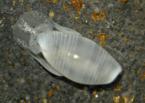
few spots

strongly banded

underside

side
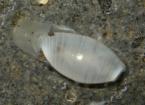
young, 3 mm
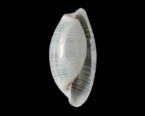
shell
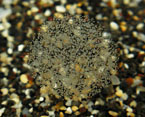
egg mass
_______________
GALLERY

Weinkauffia ukulele (Too, Carlson, Hoff & Malaquias, 2014)
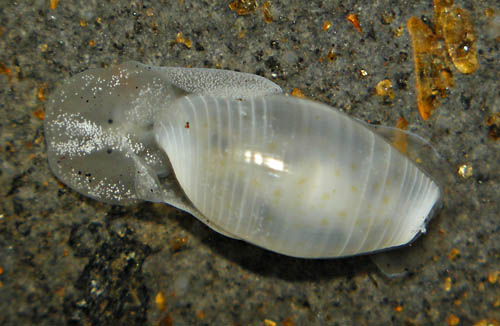
| Maximum size: 7 mm. Identification: This species has a tapered shell with apical and basal spiral striae. It varies in color from transparent to opaque white but most show some combination of transparent and opaque spiral bands that are independent of the striae. The animal is translucent gray flecked with white. Some have a few small, violet-brown spots on the lateral portions and underside of the head shield and/or the margins of the parapodia. Larger animals may have faint golden-brown spots showing through the shell. It may be distinguished from Aliculastrum debile by the spiral bands and the broader shell profile (resulting from fewer "stepped" apical and basal striae). Natural history: Weinkauffia ukulele is a moderately rare species known from ten animals found in open sand and Halimeda kanaloana beds at depths of 9-11 m (30-36 ft). However, the number of dead shells found in sand samples from up to 52 m (170 ft) suggests that it is more common in deeper water. It's a nocturnal species that buries itself in sand during the day. When handled, freshly collected animals release a small amount of violet mucus in a manner reminiscent of anaspideans. It lays a white, spherical, sand-anchored egg mass that hatches in 2.5-3 days in the laboratory. Distribution: Big Island, Maui, French Frigate Shoals and Midway. It may also be known from southern Japan, Bali and Indonesia. Taxonomic notes: Shells are present in various mixed lots at the Bishop Museum. If was formerly listed as Atys ukulele. Photo: CP: 7 mm: Black Rock, Maui; April 8, 2011. Observations and comments: Note 1: ( ) |
| Thumbnails |
Species
list |
Family | Next species | Top |